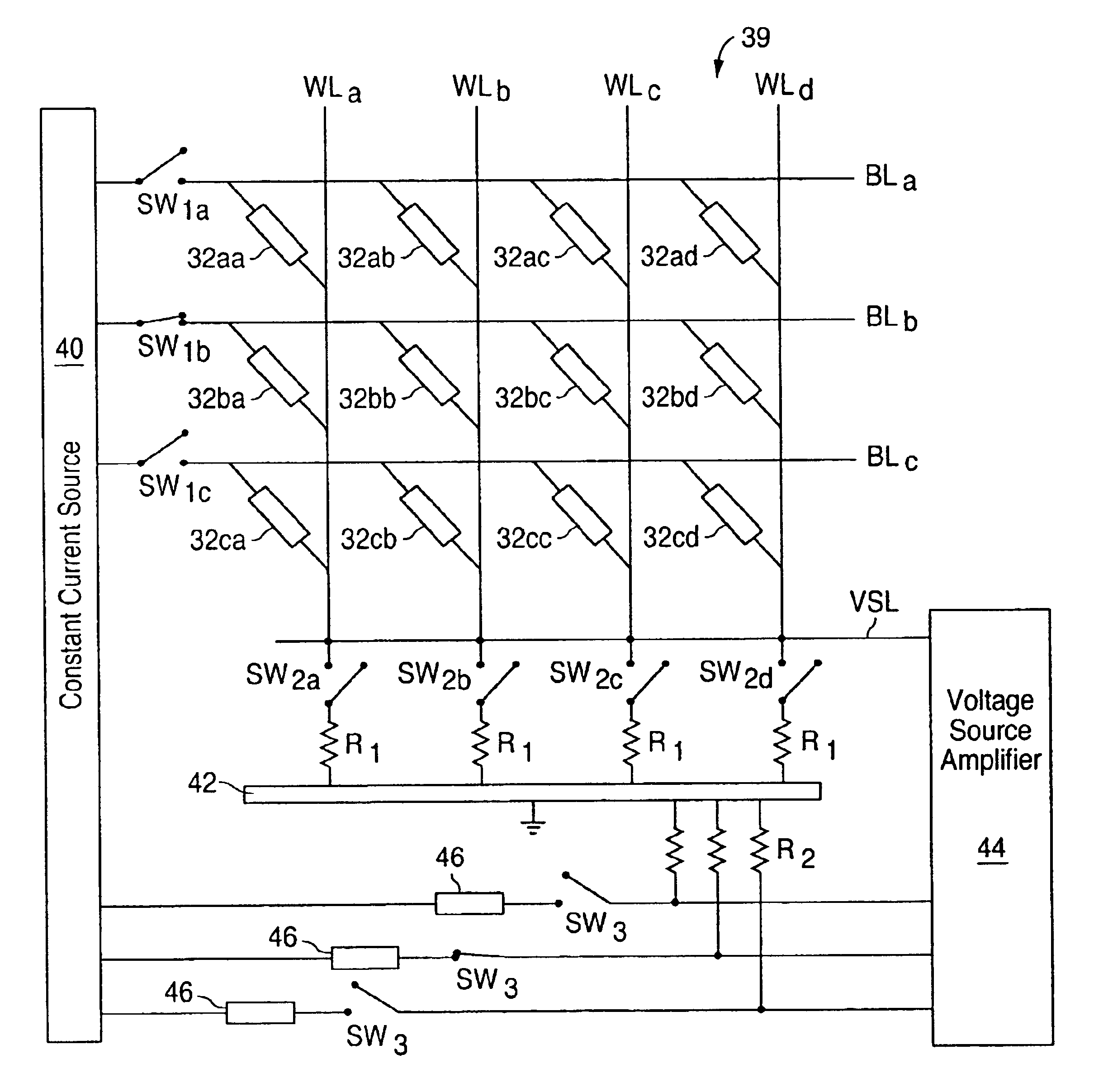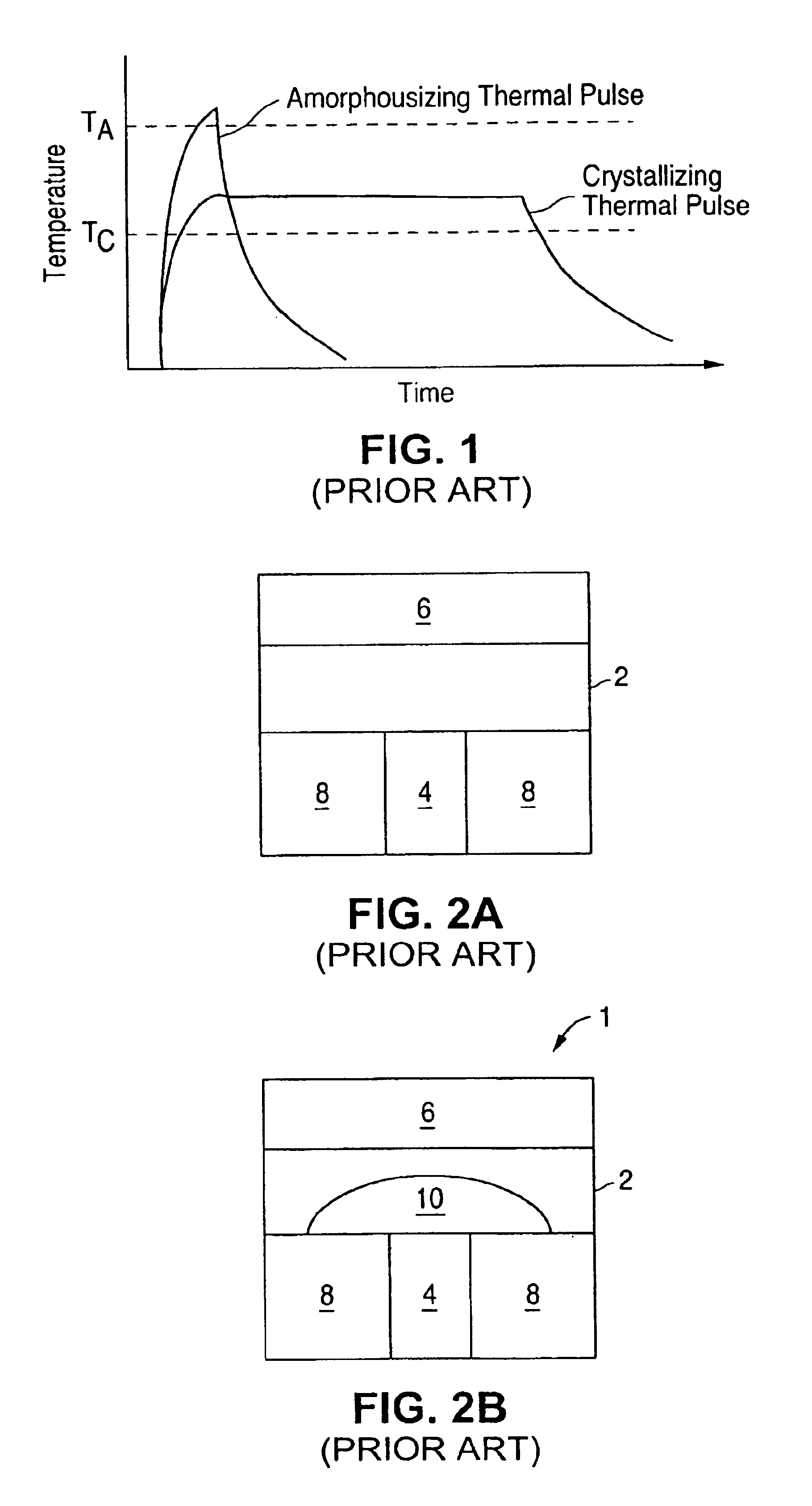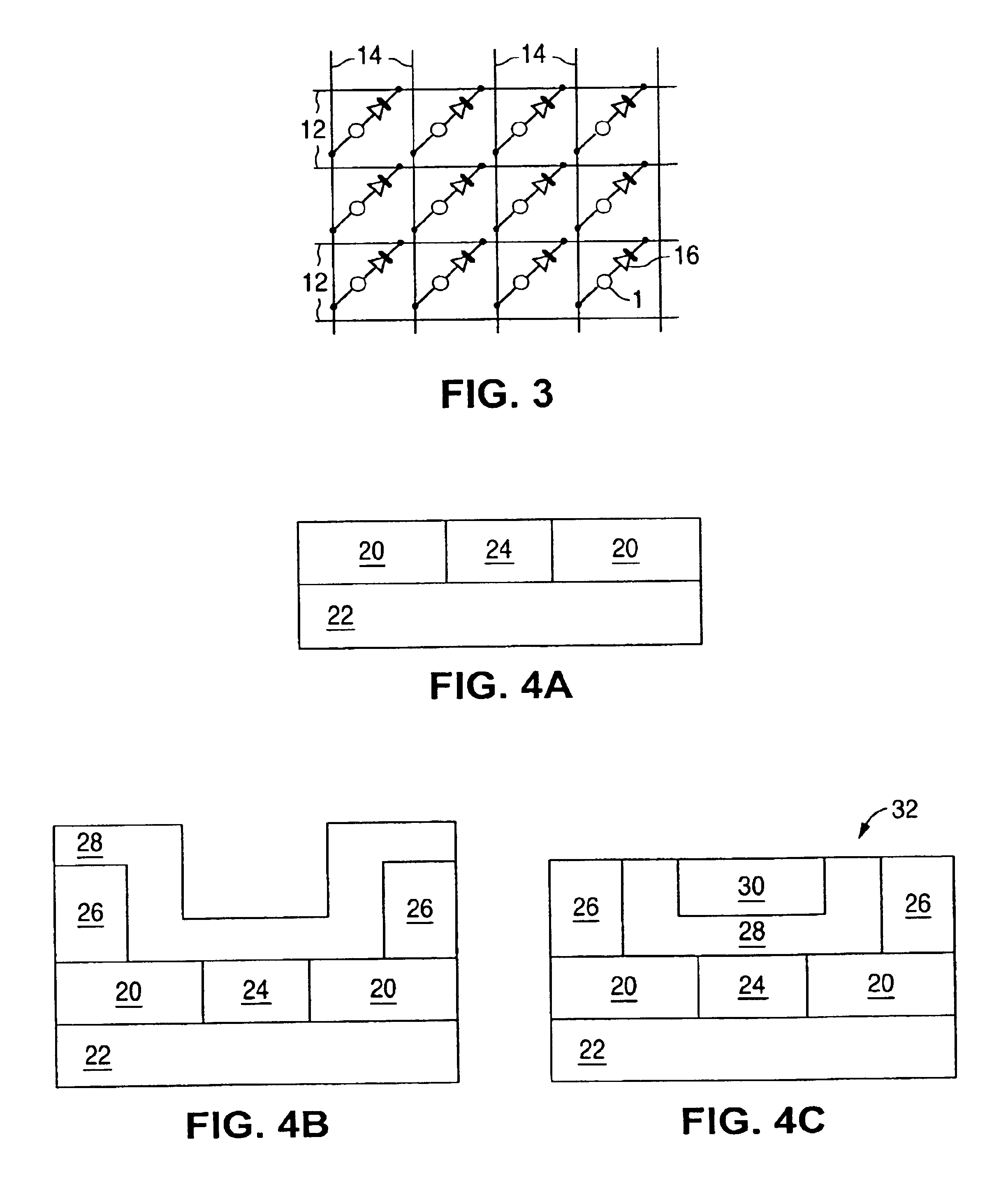Memory device and method of operating same
a memory device and memory technology, applied in semiconductor devices, digital storage, instruments, etc., can solve the problems of slow reading and programming, consuming a relatively large amount of power, and increasing the difficulty of cell scaling down to smaller sizes
- Summary
- Abstract
- Description
- Claims
- Application Information
AI Technical Summary
Benefits of technology
Problems solved by technology
Method used
Image
Examples
Embodiment Construction
[0027]The present invention is an improved configuration and interconnection of an array of programmable memory material cells, as well as an improved method of programming and reading such cells.
[0028]Individual Memory Cells
[0029]The individual memory cells used in the memory cell array of the present invention can be of many types that utilize phase change memory materials. FIGS. 4A to 4C illustrate a method of forming a phase change material memory cell used with the array of the present invention. The method begins by forming a layer 20 of insulation material (e.g. one or more layers of silicon dioxide—“oxide”, silicon nitride—“nitride”, ILD, etc.) over a silicon substrate 22 using a conventional deposition process. A (first) contact hole is formed in the insulation material 20 using a conventional lithographic etch process, which is then filled with a conductive material (e.g. tungsten, titanium-tungsten, etc.) by material deposition followed by a CMP (chemical-mechanical polis...
PUM
 Login to View More
Login to View More Abstract
Description
Claims
Application Information
 Login to View More
Login to View More - R&D
- Intellectual Property
- Life Sciences
- Materials
- Tech Scout
- Unparalleled Data Quality
- Higher Quality Content
- 60% Fewer Hallucinations
Browse by: Latest US Patents, China's latest patents, Technical Efficacy Thesaurus, Application Domain, Technology Topic, Popular Technical Reports.
© 2025 PatSnap. All rights reserved.Legal|Privacy policy|Modern Slavery Act Transparency Statement|Sitemap|About US| Contact US: help@patsnap.com



